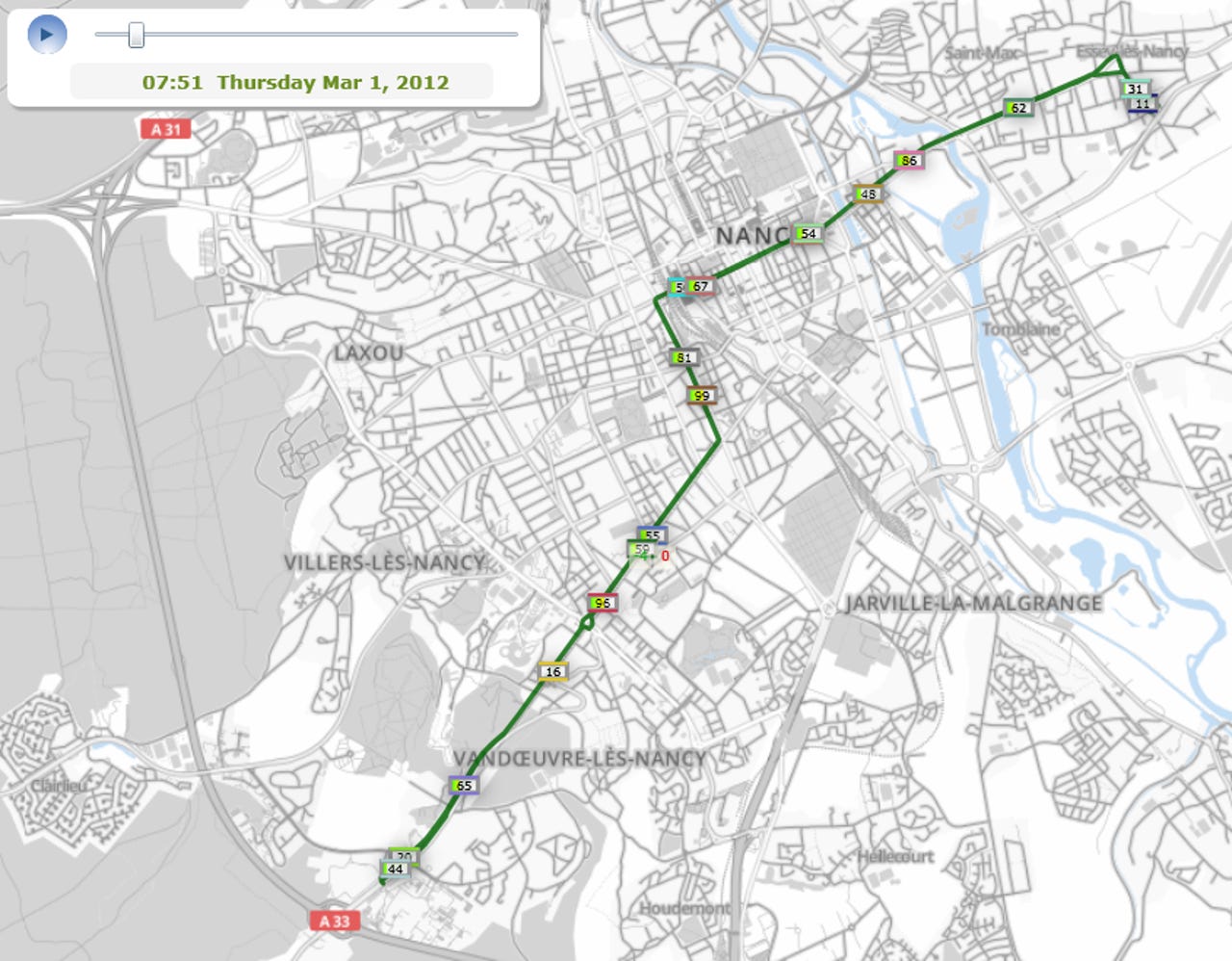Instrumenting the smart city, one parking space at a time

As we rush headlong into a ubiquitous computing tomorrow, where an ambient network of devices around us adds sensors to our world, we're building smarts into both the small and the large - and there's not much larger than Los Angeles. That's where Xerox Research has been working on a pilot project that's having a significant impact on one of the city's perpetual issues.
Instrumented cities are about a lot more than using CCTV to monitor streets. They're about using technology to make peoples' lives easier: making cities attractive places to live. In my home city of London I use the sensor network built into its public transport system to know when the next train or bus is due - and to navigate alternate routes in the event of traffic disruption.

Tools like London's instrumented public transport network are key to improving city life, finding pain points in citizens' daily lives and giving them access to information that can reduce their impact. It doesn't need to be live information, Xerox Research has used historical fare data to determine improved bus and tram schedules in the French city of Nancy, understanding the flow of commuters and casual users throughout the day.
Like most large US cities, Los Angeles has seen its center hollow out as citizens moved to its myriad suburbs. Freeways and the private car mean the city center is now a business district, empty at night and at weekends. That's why the city is trying to change usage patterns - bringing people back into the city for leisure activities and other events. There's just one problem: parking.
Los Angeles used to have one of the largest networks of streetcars in the world. Now it's the quintessential car city, and while it's building out a modern light rail metro system, it only covers a fraction of the megalopolis. So if you're going to encourage people to come back into the city, you're going to need to provide plenty of parking - in the places that people want parking.
That's going to mean using sensors to see what spaces are being used when, and applying that information to a dynamic pricing model. It's also about understanding why people park where they do, and what drives them to accept one price over another. Take the spaces outside a clinic with an emergency room: most people will want to park outside it, ignoring the spaces on the other side of the street or round the corner on the same block.
By applying a dynamic pricing model, when the spaces outside the clinic are full, the system can drop the prices on the other meters on the block to encourage usage - and to stop people driving round and round in circles until an expensive space is free. Charging $2 an hour, say, outside the front doors and 25c an hour on the side street makes it easier for people to find spaces - spaces that are a lot cheaper than the old $1 an hour rate that used to be charged at all the meters.
That's why Xerox started by developing a model of how and why people parked where they did - using sociologists and anthropologists to understand just why people parked the way and where they did, and why they accepted paying what they did. With user research like this, it was possible to construct a basic dynamic pricing model that could be used to change how people park. But to get the full story and a change of behavior that model needed to be backed up with real-time data.
Los Angeles has been instrumenting its on-street parking, so as dynamic pricing rolled out there were 7,000 sensors that could be used to manage and visualise the parking meters. With real-time information about occupied and open spaces from these sensors, the pricing model could be adjusted to encourage usage in areas that weren't being used, lowering prices where parking was being encouraged, raising them where there was heavy usage. The sensors weren't the only source of information: prices could also be changed to take account of events, of street closures and of weather conditions.
The city made the sensible decision to roll out dynamic parking slowly, reducing parking costs for 60 percent of the city's spaces down to 50c per hour, and only increasing prices for 27 percent - with a slight increase in revenue. Making money wasn't the aim of the exercise, it was to encourage people to return to the city. That's not just about better usage of parking, it's also about encouraging use of public transport - and of ride-sharing and park-and-ride schemes.
Where next for the programme? Once you've got the data, it needs to be more widely available - and if you're trying to encourage improved parking usage it needs to be in the hands of the people trying to park. There's no point having to look at a meter to see how much it will cost, you need to be able to plan where to park in advance if you're going to encourage sustainable use of the system. That's why the next step is a parking app for smartphones and the web; with a longer term vision of merged parking and traffic information.
That's the future of the instrumented smart city: making the information it gathers available to citizens, to help them make better decisions, not leaving it in silos that might get analyzed someday. It's all part of the other side of the ubiquitous computing future: access to contextual information (or as I often call it, 'right time information'; the right information to the right person at the right time so they can make the right decision for the right outcome.).
When it comes to the smart city, the end game isn't just instrumenting the city, it's making it a safer, sustainable - and above all - better place to live.